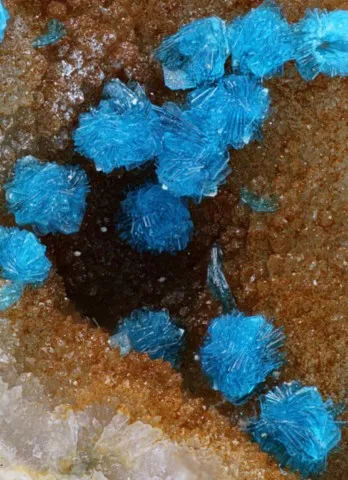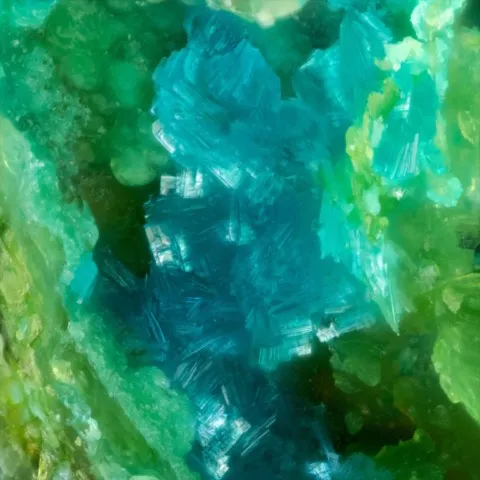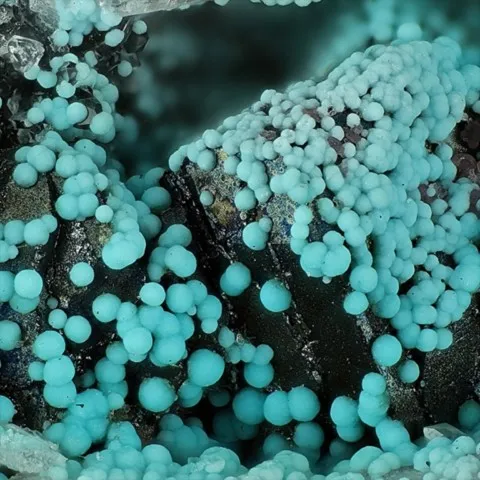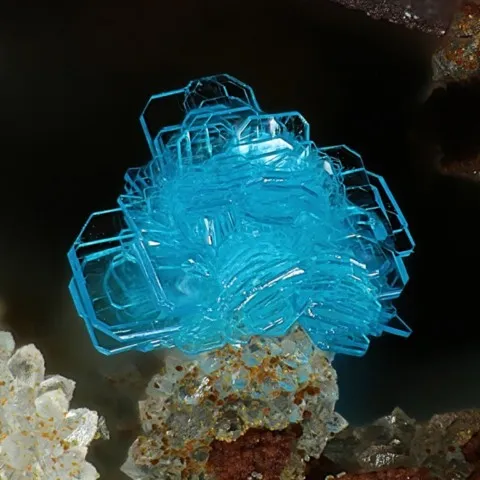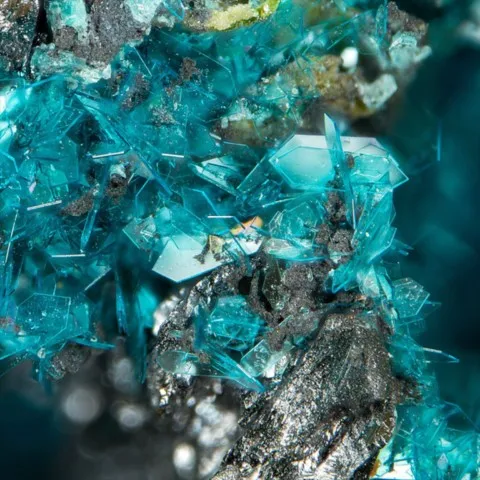RICHELSDORFITE
Class : Phosphates, arsenates, vanadates
Subclass : Hydrated arsenates
Crystal system : Monoclinic
Chemistry : Ca2Cu5Sb(AsO4)4(OH)6Cl 6H2O
Rarity : Rare
Richelsdorfite is an arsenate from the oxidation zone of hydrothermal copper-arsenic deposits. Its name derives from its discovery locality : the Richelsdorf Mountains in Germany. Richelsdorfite is a blue to blue-green mineral that forms spherical aggregates and botryoidal incrustations, rarely small tabular crystals of 0.5 mm maximum. It usually accompanies other secondary copper minerals, notably arsenates (duftite, tyrolite) and forms preferentially at the contact of tetrahedrite and tennantite.
Main photo : Rhönite from Nickenicher Sattel, Germany © Edgar Müller
Richelsdorfite in the World
Twinning
No twinning known for this mineral species.
Fakes and treatments
No fakes listed for this mineral species.
Hardness : 2
Density : 3
Fracture : Undetermined
Streak : Pale blue
TP : Translucent to transparent
RI : 1.640 to 1.694
Birefringence : 0.054
Optical character : Biaxial -
Pleochroism : None
Fluorescence : None
Solubility : Hydrochloric acid
Magnetism : NoneRadioactivity : None

